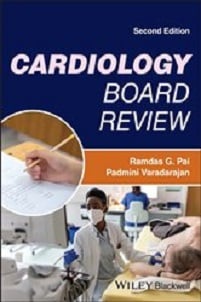-76%
Delving into Vascular Surgery: A Comprehensive Examination of “Modern Trends in Vascular Surgery”
Introduction
The esteemed compendium “Current Vascular Surgery 2013 (Modern Trends in Vascular Surgery)” offers an unparalleled exploration of the transformative advancements shaping vascular surgery. Authored by the renowned trio of Mark K. Eskandari M.D., William H. Pearce M.D., and James S. T. Yao M.D., this seminal work illuminates the cutting-edge techniques and approaches that are revolutionizing the field.
Chapter 1: Endovascular Intervention
The advent of endovascular intervention has heralded a paradigm shift in vascular surgery. This minimally invasive technique offers a less traumatic approach to treating a wide range of vascular conditions, including aortic aneurysms, carotid artery stenosis, and peripheral artery disease. The chapter explores the latest advancements in endovascular stent-graft technology, the intricacies of balloon angioplasty, and the efficacy of drug-eluting stents.
Chapter 2: Surgical Aortic Aneurysm Repair
Aortic aneurysms pose a grave threat to patients, requiring timely and effective intervention. This chapter delves into the surgical techniques employed to repair these life-threatening dilations. From traditional open surgery to the emerging endovascular approach, the authors provide a comprehensive overview of the advantages and limitations of each approach.
Chapter 3: Carotid and Peripheral Artery Surgery
Carotid artery stenosis and peripheral artery disease can significantly impair blood flow to the brain and limbs, respectively. This chapter examines the surgical options available to address these conditions, including carotid endarterectomy, carotid stenting, and bypass grafting for peripheral artery disease. The authors highlight the latest advancements in these procedures, discussing the role of microsurgery and the use of biomaterials.
Chapter 4: Vein Surgery
Venous disease affects a substantial portion of the population, ranging from varicose veins to deep vein thrombosis. This chapter explores the surgical management of these conditions, covering venous stripping, endovenous laser ablation, and the use of saphenous vein grafts in coronary artery bypass surgery. The authors emphasize the importance of patient selection, proper technique, and post-operative care.
Chapter 5: Dialysis Access
The creation and maintenance of reliable dialysis access is crucial for patients with end-stage renal disease. This chapter discusses the various surgical techniques used to establish and preserve arteriovenous fistulas and grafts, such as autologous fistulas, prosthetic grafts, and tunneled catheters. The authors provide guidance on selecting the optimal approach for each patient, considering factors such as patient anatomy and comorbidities.
Chapter 6: Wound Management
Wound care is an integral aspect of vascular surgery, as post-operative wounds can pose significant risks for infection and complications. This chapter examines the principles of wound management, including wound assessment, debridement, and the use of advanced dressings. The authors discuss the importance of multidisciplinary collaboration, including the role of plastic surgeons and infectious disease specialists.
Conclusion
“Current Vascular Surgery 2013 (Modern Trends in Vascular Surgery)” stands as an invaluable resource for surgeons, residents, and healthcare professionals seeking to stay abreast of the latest advancements in the field. Its comprehensive coverage, expert authorship, and forward-looking perspective make it an indispensable guide for anyone striving to deliver exceptional care to patients with vascular conditions.










Reviews
Clear filtersThere are no reviews yet.